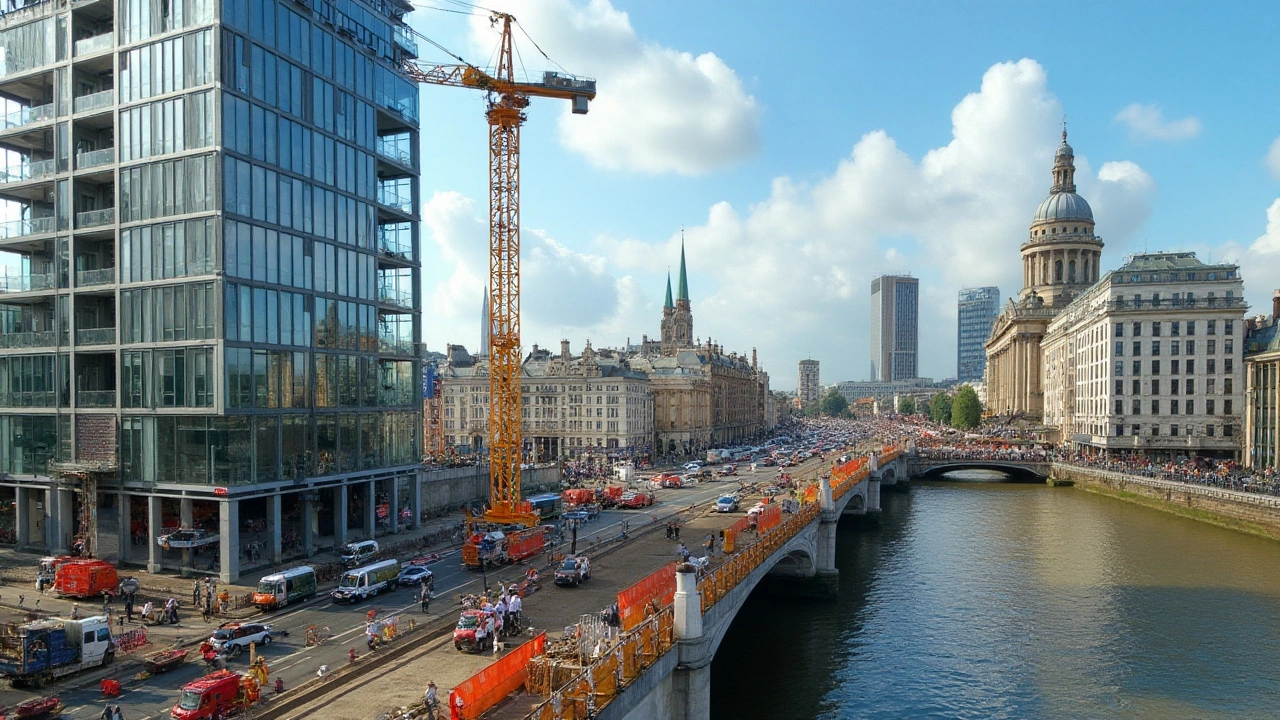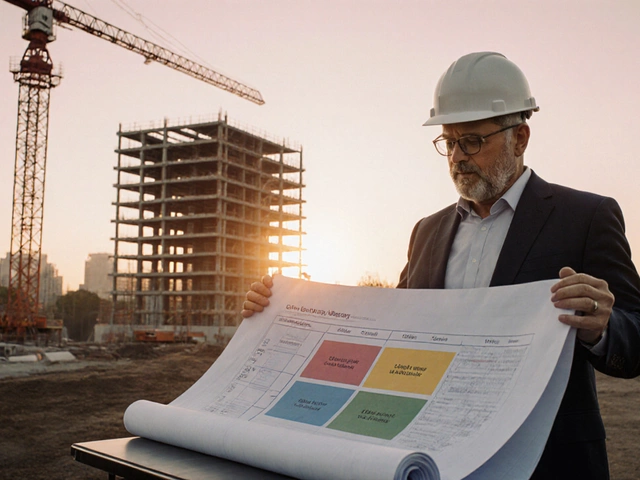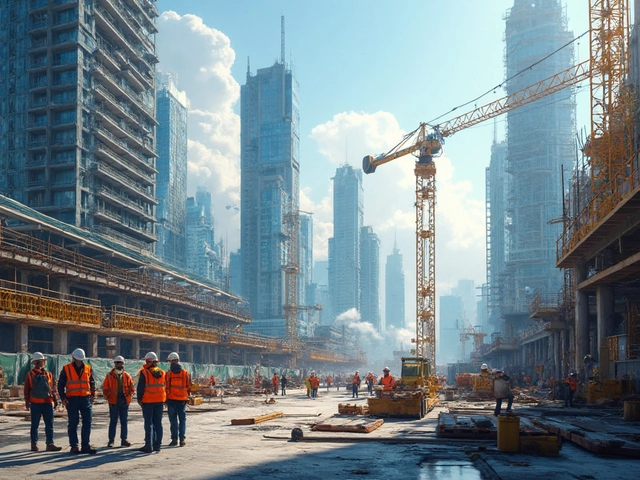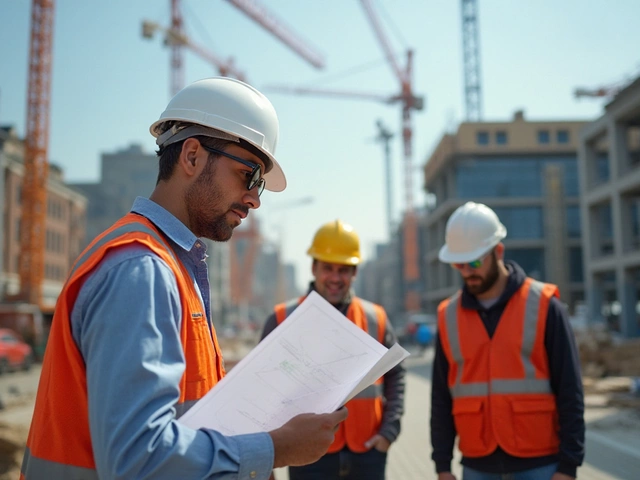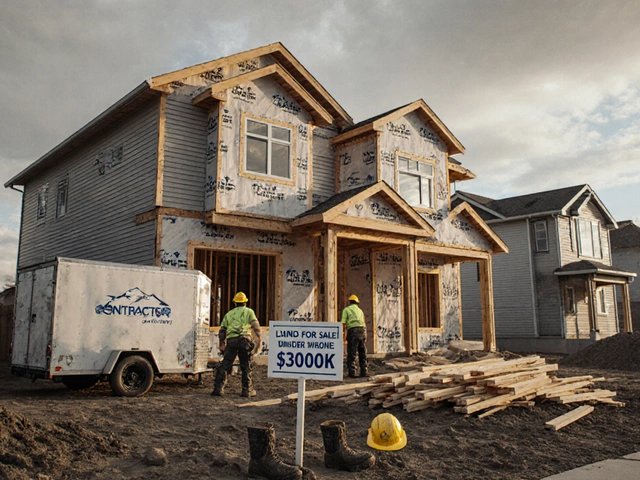Navigating the world of construction can be as complex as the projects themselves. Two major categories often discussed are civil and commercial construction. While these terms might seem interchangeable, they actually refer to distinct types of construction that serve different functions and cater to unique needs.
Understanding the nuances between civil and commercial projects is crucial for anyone involved in the development process, from stakeholders to contractors. Each has its own set of challenges, regulations, and objectives, requiring specific expertise and resources.
By diving into the characteristics of each category, this guide helps clarify what sets civil and commercial construction apart, providing valuable insights and practical tips for choosing the right approach for your project goals.
- Understanding Civil Construction
- The Purpose of Commercial Construction
- Key Differences Between Civil and Commercial Construction
- Choosing the Right Type of Construction
- Impacts on Budget and Timelines
Understanding Civil Construction
Civil construction is the backbone of our modern society, responsible for creating the essential infrastructure that supports everyday life. This sector encompasses a wide range of projects, including roads, bridges, tunnels, water supply, sewage systems, and dams. What sets civil construction apart from other types is its focus on public utility and infrastructure, striving to enhance urban living and ensure a seamless flow of essential services. Civil engineers and contractors must pay special attention to public safety, environmental impact, and sustainability during the planning and execution stages. These projects often require compliance with stringent regulations, reflecting their importance to the community and the overall landscape.
In civil construction, collaboration with government agencies and adherence to local and national regulations is critical. The complexity of these projects often leads to a lengthy planning process, which involves not only engineering and architectural considerations but also environmental assessments and community consultations. Take, for instance, the construction of a major bridge—it's not just about design and materials; the project must also consider the impact on traffic, local businesses, wildlife, and nearby residents. A successful civil construction project is one that balances demands from these varied stakeholders while meeting technical requirements.
Another defining aspect of civil construction is scale. These projects are typically large and complex, requiring substantial resources in terms of materials, workforce, and budget. Large-scale civil projects often involve multiple phases of construction, each requiring precise coordination and management. The Glen Canyon Dam, for example, took over a decade to complete. Such projects demand not only significant investment but also meticulous planning and execution. Additionally, the materials used in these projects are often different from those in commercial construction, focusing on durability and longevity to withstand environmental factors and heavy usage over time.
Civil construction's impact on the economy and environment cannot be understated. Infrastructure improvements lead to job creation and economic growth, facilitating trade and mobility, while sometimes they also pose challenges such as land usage and ecological disruption. To mitigate negative impacts, modern civil construction increasingly embraces innovative techniques and technology. The use of sustainable materials, smart planning software, and green building practices helps reduce the carbon footprint of civil projects, promoting a balance between development and conservation.
As Henry Petroski, an authority on design and engineering, once noted, "Civil engineering is a discipline that is constantly evolving to overcome the challenges of everyday life and embrace new technology and materials."
For those considering a career in civil construction, having a grasp on these complexities is crucial. Educational backgrounds typically include engineering, mathematics, and project management. Career paths can range from on-site management roles to design and planning positions that influence the structure and functionality of a city's landscape. Understanding the specific demands and requirements of civil construction helps professionals elevate in a field that combines innovation with public service.
The Purpose of Commercial Construction
Commercial construction plays a vital role in shaping the landscapes of our cities and towns. Its goal is to create buildings and facilities designed for business endeavors. From sleek office towers to bustling shopping malls, commercial construction accommodates spaces where commerce and trade take center stage. Unlike civil construction, which often focuses on essential infrastructure for the public good, commercial endeavors aim to stimulate economic activity and create environments conducive to business success.
The scope of commercial construction is broad and includes the development of retail centers, hotels, warehouses, and restaurants. Each type of facility requires a unique approach; for instance, constructing a hospital entails incorporating vital medical features and regulatory standards. On the other hand, an office building might emphasize sustainable design to attract eco-conscious tenants. A significant number of these projects not only contribute to the economy by generating jobs during construction but also sustain jobs in the commercial sectors they support post-completion.
In recent years, there has been a notable shift towards sustainable commercial construction practices. As businesses look to minimize their environmental footprint, the demand for green buildings has surged. Incorporating energy-efficient systems, using sustainable materials, and designing for reduced water usage are just some of the ways commercial construction is evolving. According to the U.S. Green Building Council, green building practices could result in a 16% reduction in energy use globally by 2030, emphasizing the long-term benefits of this trend.
“Commercial construction is the backbone of urban development, providing the facilities that enable services and enterprises to thrive, driving economic growth and innovation.” — Construction Industry Expert
Moreover, the significance of commercial construction extends to the economy as a whole. Large-scale projects can significantly boost local economies by attracting businesses, which in turn spurs additional investment in the vicinity. This phenomenon is often referred to as the ‘multiplier effect.’ When a new shopping mall is built, for instance, it can lead to the development of nearby service businesses such as restaurants and entertainment venues, creating a ripple effect of economic prosperity.
By focusing on these intents, commercial construction not only defines the functionality and aesthetics of urban spaces but also contributes to long-term economic stability and growth. The strategic planning involved ensures that buildings are not merely structures but are integral parts of the urban ecosystem, designed to meet the evolving needs of businesses and consumers alike.
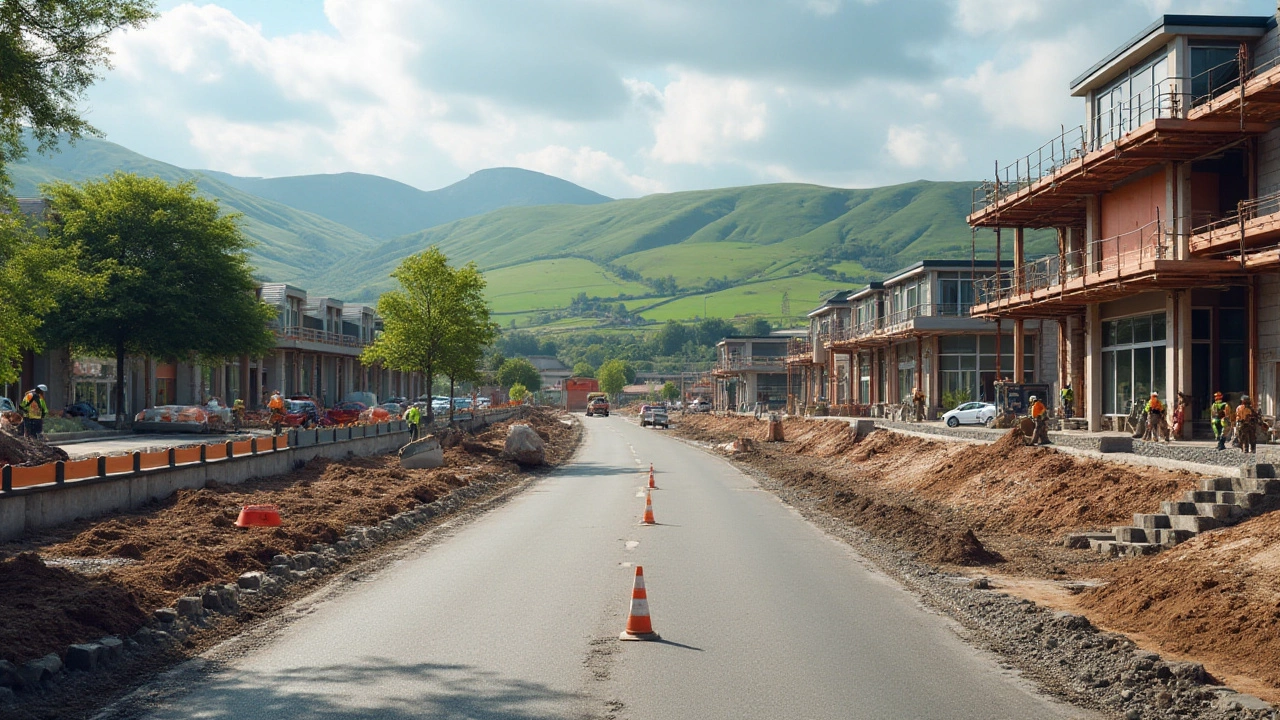
Key Differences Between Civil and Commercial Construction
When we embark on the journey of distinguishing civil construction from its commercial counterpart, it's like peeling back the layers of a complex onion. At first glance, civil and commercial structures might appear to share common threads—both involve building on a grand scale and require skilled labor and materials. However, the core objectives and tangible outcomes set them worlds apart. Civil construction projects primarily focus on public infrastructure. Think of the sprawling highways, robust bridges, and sprawling dams that punctuate the landscape. These structures serve the greater public good, often funded by governmental entities or public authorities. In contrast, commercial construction embodies the essence of economic enterprise, creating spaces that cater to business and commerce, ranging from sleek office buildings to bustling shopping malls.
These distinctions stretch beyond just the purpose to the very way projects are executed. Civil projects typically operate within a landscape that demands a deep understanding of environmental and social considerations. They involve rigorous assessments to ensure that the broader environment remains unharmed. Compliance with environmental regulations, land-use policies, and sustainability standards is critical. In contrast, commercial construction projects focus intently on aligning with the intricate needs of businesses. This often means a greater emphasis on architectural aesthetics and functional utility, ensuring that the spaces built aid productivity and consumer engagement. An interesting nugget is that while civil projects may stretch over more extended periods due to their complexity and regulatory scrutiny, commercial buildings often demand quicker turnarounds to fulfill market pressures.
On a financial scale, the two types of construction venture into distinct territories. The funding avenues for civil projects typically involve public money, which brings an added layer of accountability and public oversight. It is not uncommon for these projects to face delays, not just due to technicalities but also due to the complexities of public funding mechanisms. On the other hand, commercial construction is usually backed by private investment. This offers a certain degree of flexibility but also introduces financial risk that requires meticulous strategic planning. The differing financial landscapes dictate not only how budgets are managed but also influence the patrimony of the project over time.
From a manpower perspective, the skill sets required in each sector also diverge. Civil construction often demands expertise in large-scale engineering disciplines, including structural and civil engineering. Projects can span vast geographic areas, and coordination with multiple governmental and civic bodies is a norm. Workforces are often large, requiring logistical finesse to manage. In the commercial realm, having a keen eye for architecture and design plays a more pronounced role. The workforce is often more focused in scope, centered around delivering pristine, user-friendly environments where form and function coexist harmoniously.
The materials used across civil and commercial construction projects reflect the demands of their respective environments. Civil projects, tasked with robustness, often utilize heavy-duty materials capable of withstanding immense stress and imposing natural elements. Reinforced concrete, steel, and durable composites are commonplace. There is a greater focus on longevity and resilience. Meanwhile, commercial buildings not only embrace strength but also aesthetics. Therefore, glass, polished metals, and other architectural components feature heavily, with facades that captivate and draw in patrons and clientele.
Choosing the Right Type of Construction
When you're at the helm of a construction project, one of the primary decisions you'll need to make is whether to pursue civil construction or commercial construction. This choice isn't merely a matter of preference; it's dictated by the project's fundamental needs and objectives. Civil construction typically caters to infrastructure projects such as roads, bridges, and water systems. Such projects are usually backed by government entities or public funding and have a direct impact on the community's functioning. Conversely, commercial construction involves the creation of structures like office buildings, shopping centers, and hotels. These projects are usually privately funded and driven by business needs.
The decision-making process involves evaluating the project scale, purpose, budget, and expected outcomes. A civil project generally requires a scale that coincides with significant community impact and long-term public utility. Consider a large-scale highway project. It necessitates collaboration with government departments and an understanding of public policy, making civil construction specialists invaluable. On the flip side, if the project calls for a stylish, highly functional retail complex, partnering with experts in commercial construction would be beneficial. These experts understand market demands and the importance of creating spaces that attract and retain tenants.
"Understanding the requirements and limitations of both construction types means you can better allocate resources and meet project expectations," says industry leader Jane Douglas.
One of the vital factors influencing your choice is budget. Commercial construction often allows for more flexibility with designs and materials, albeit with a potentially higher investment since features such as aesthetics and client-specific customizations hold more value. Civil construction, in contrast, may have stricter budget constraints imposed by public funding. For instance, a city's new bridge must not only meet safety and functionality standards but also adhere to stringent budgetary guidelines, ensuring taxpayers' money is effectively spent.
Moreover, the timeline of your project can heavily influence whether civil or commercial routes are more feasible. Civil projects often span longer periods, reflecting their complexity and the need to coordinate with public plans and approvals. Timing in commercial construction is often quicker, pressured by market dynamics and the potential for immediate revenue once operational. Experienced managers in either domain embrace these timelines, offering insights and strategies for efficiency, but the inherent differences shape the management approach significantly.
Making an informed decision requires consultation with experts who not only provide guidance on construction specifics but also understand the broader impacts of your choice. Architects, engineers, and financial advisors can be indispensable in this process, helping bridge the gap between initial idea and tangible structure. Commercial construction might well suit your needs if the end goal is quick market integration and brand establishment, while civil construction excels when creating enduring frameworks for public use. In scrutinizing these elements, project leaders set the trajectory for successful, sustainable development.

Impacts on Budget and Timelines
There's no denying that commercial construction and civil construction each have their own intricacies when it comes to budgeting and timelines. For a project manager, understanding these might mean the difference between a smoothly executed project and a stress-inducing delay. The scope of civil construction often involves public infrastructure, like highways or water treatment plants. Due to their grand scale, these projects come with enormous budgets that can run into millions, even billions of dollars. The financial stakes are high, as are the expectations to meet precise deadlines. These demands are further complicated by the necessity of adhering to strict regulations and public accountability. Delays can cost not only money but public trust.
Conversely, when you’re dealing with commercial construction—think office buildings or retail spaces—financial limitations and deadlines are often dictated by business imperatives. Commercial projects, though typically smaller in scope than civil ones, have their own set of budgetary challenges driven by competitive financing, changing market conditions, and operational costs. The timelines are often tight due to the direct impact on business operations. A delayed shopping mall opening, for instance, means a direct hit on revenue generation.
One interesting aspect of both civil and commercial projects is how external factors can impact the timeline and costs. For civil projects, weather, legislative changes, or unforeseen geological discoveries can dramatically alter timelines. Meanwhile, for commercial projects, factors such as tenant requirements or branding changes can shift the project's scope mid-way through development.
To offer an insider's insight, consider this: "In my experience, timeline flexibility is less in commercial construction," observes construction consultant Diane Levy. "Civil projects have buffers, but commercial contracts often come with penalty clauses for delays."
"In my experience, timeline flexibility is less in commercial construction," observes construction consultant Diane Levy.This difference in contractual structure means that commercial developers must be exceedingly precise in planning and executing their timelines.
Understanding the main cost drivers is essential for both types of construction. Labor costs, material availability, and technology implementation are universal concerns. However, in civil construction, government funding and support can significantly offset these costs. Commercial construction typically relies on private investment or commercial loans, sometimes making financial management trickier with the risk of interest rates or market dips affecting the available budget.
Let's consider some figures to provide a clearer picture. According to industry data, labor and materials constitute about 50% of a civil project's budget, but regulatory and legal compliance can add another 10-15%. On the commercial side, those figures are more balanced, with site acquisition often taking a larger chunk, around 20%, largely due to urban settings.
| Expense Type | Civil Construction (%) | Commercial Construction (%) |
|---|---|---|
| Labor and Materials | 50% | 50% |
| Site Acquisition | 5-10% | 20% |
| Regulatory Compliance | 10-15% | 5-7% |
Understanding the intricate impacts on budget and timelines between these two sectors is key. Whether embarking on a civil or commercial project, the need for strategic planning, comprehensive risk assessments, and precise execution is universal. Both types of construction demand expertise and forethought to align timelines with budget realities for successful project delivery.
